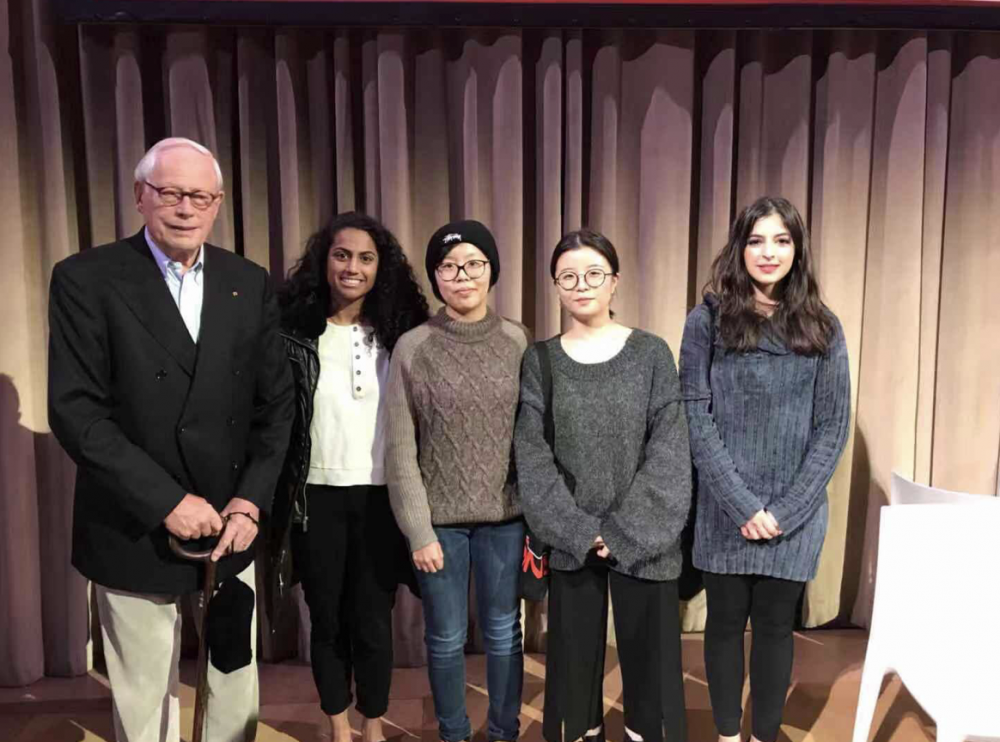Parsons BFA Product and MFA Industrial Design students swept all but one place with six awards at the prestigious Collab Competition
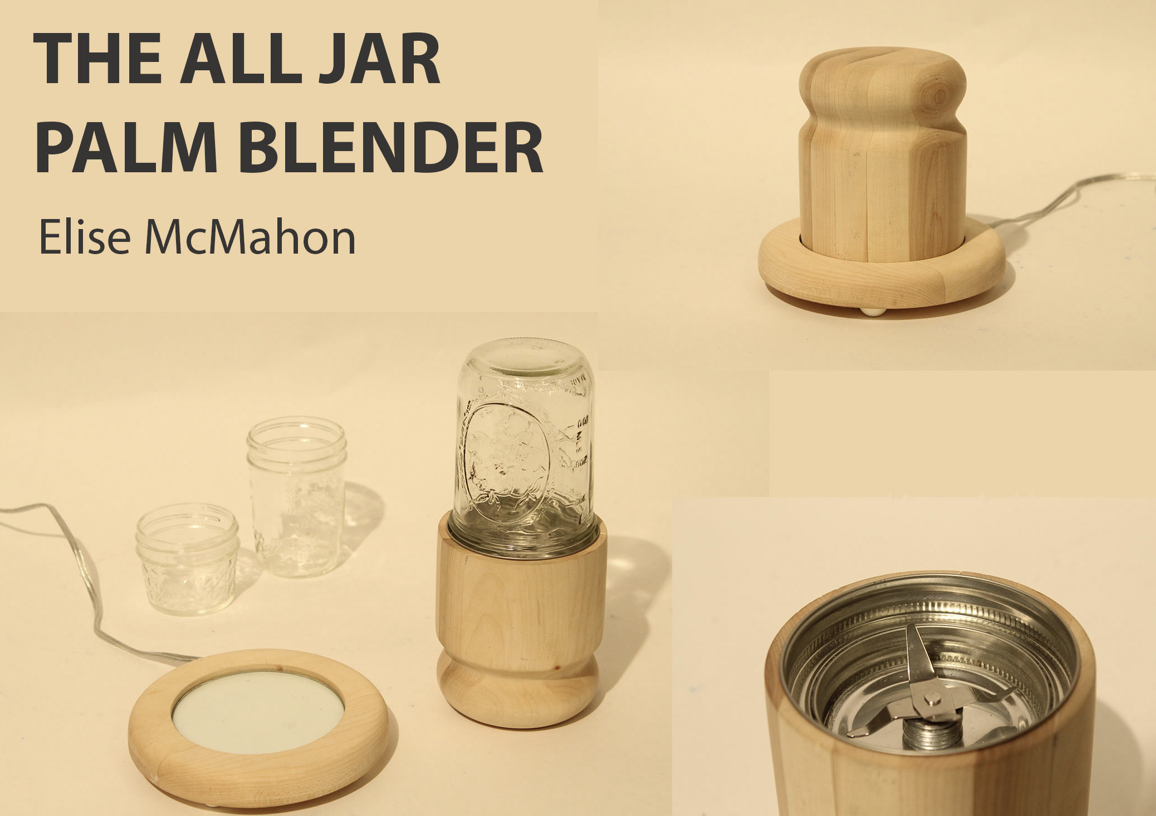
Students from the BFA Product and MFA Industrial Design participated in the Collab Student Competition at the Philadelphia Museum of Art on November 12th. 2018.
This year the competition was inspired by Dieter Rams and the study of his ten principles for Good Design.
The work presented by our students was very well received and we are proud to highlight the winning projects:
SECOND PLACE WINNER
Project: ALL JAR
Student: Elise McMahon
Faculty: Yvette Chaparro
Universally compatible with widely available ball jars, this wirelessly charged appliance allows for ample storage & easy grab & go living. Straight forward manufacturing with primarily natural materials makes this a guilt free, sustainably minded product. This product was born out of an observation of wellness culture and its consumption habits around often aesthetically imposing and environmentally unfriendly materials. The wellness community may want another option!
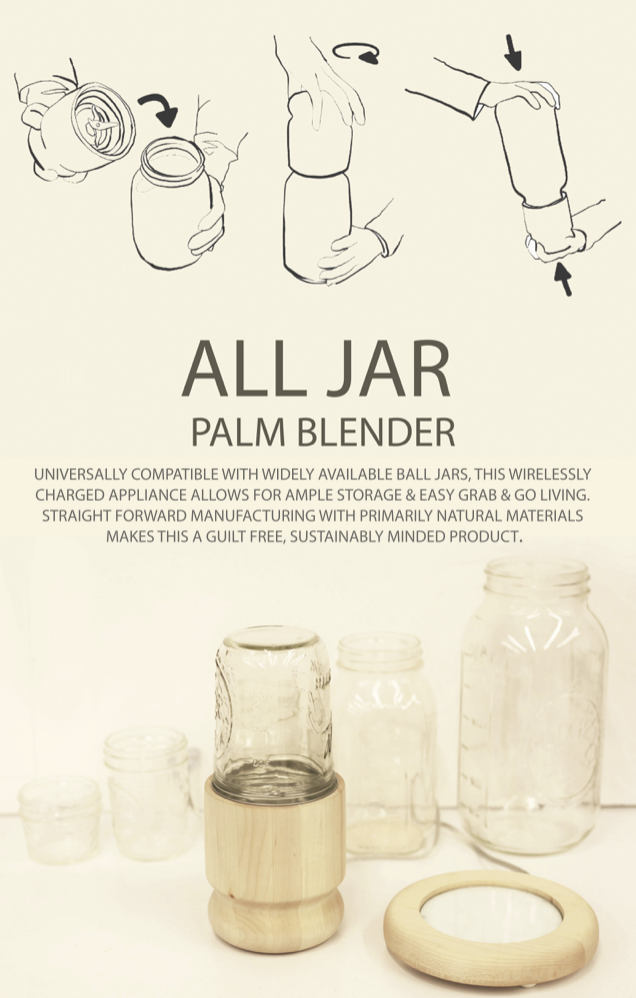
THIRD PLACE WINNER
Project: ESEA
Student: Doissac Doyoung Kim
Faculty: Daniel Michalik + Christian Swafford
ESEA sustainable towel dry rack provides you with high physical and emotional satisfaction in your living by keeping your bath towel fresh without any odors and bacteria. The rack functions as high energy-saved and solar-powered air dryer. Natural anti-bacterial ceramic and bamboo charcoal inside of the rack also dehumidifies and sanitizes a towel, which can help you sustain fresh atmosphere of your bathroom.
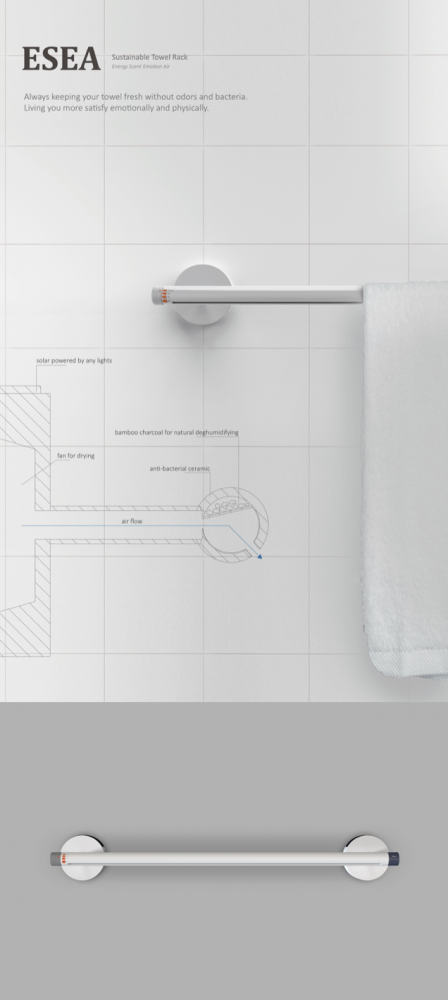
HONOURABLE MENTION
Project: EK1
Student: Max Hoffman
Faculty: Yvette Chaparro
EK1 was inspired by the concept “less is better.” Fittingly, then, this statement will follow the same principles of EK1’s design methodology.
Deriving influence from objects such as Dieter Rams’ Sk61 Record Player and the mobiles of Alexander Calder, EK1 is emblematic of a design process that encapsulates the intersection of functionality and form. Utilizing the majestic qualities of induction heating, EK1 is both inconspicuous and noticeably efficient. Prior to EK1, the interaction of a glass vessel with an induction platform had not been explored. By nesting a solid ‘puck’ of stainless steel at the bottom of a glass vessel, this ‘puck’ heats up by induction heating and boils the water from the inside. This has never before been done. This product is not only convenient in its design, but also demonstrates a revolutionary and unexplored concept. The glass vessel in KE1 is not my own design but a pre-existing and manufactured glass form titled ‘EMMA’ by Corrado Dotti for Ichendorf. Any glass vessel paired with the metal puck would work seamlessly on EK1, but double walled glass vessels insulate and protect from heat therefor removing the need for a handle or glove.
In the development of EK1, I studied the aspects I noticed were absent or superfluous in a water boiler, an object many interact with every day. The electric kettle is a counter appliance that remains visible even when not in use. Therefore, it is essential that EK1 was aesthetically pleasing, but also familiar enough in its form that one need not read instructions to understand its function.
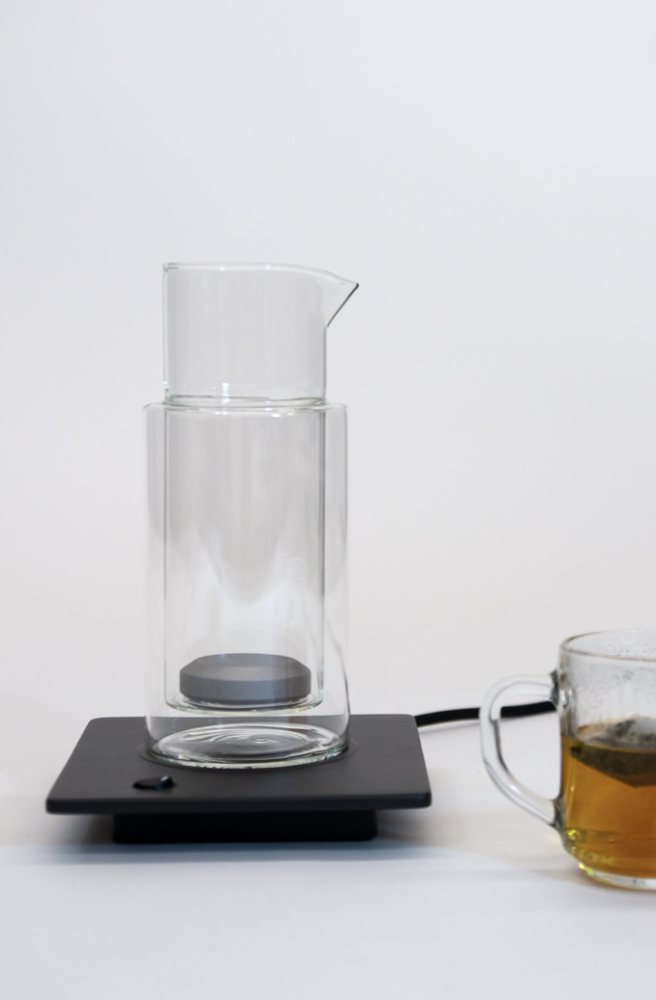
HONOURABLE MENTION
Project: Good Egg
Student: Devon Reina
Faculty: Daniel Michalik + Christian Swafford
Good Egg is an egg boiler inspired by traditional Japanese packaging. It uses a removable thermal resistant coil to contain the eggs while cooking and cooling. The system removes heavy pots of boiling water from the process, adding ease to the cooking of your eggs.
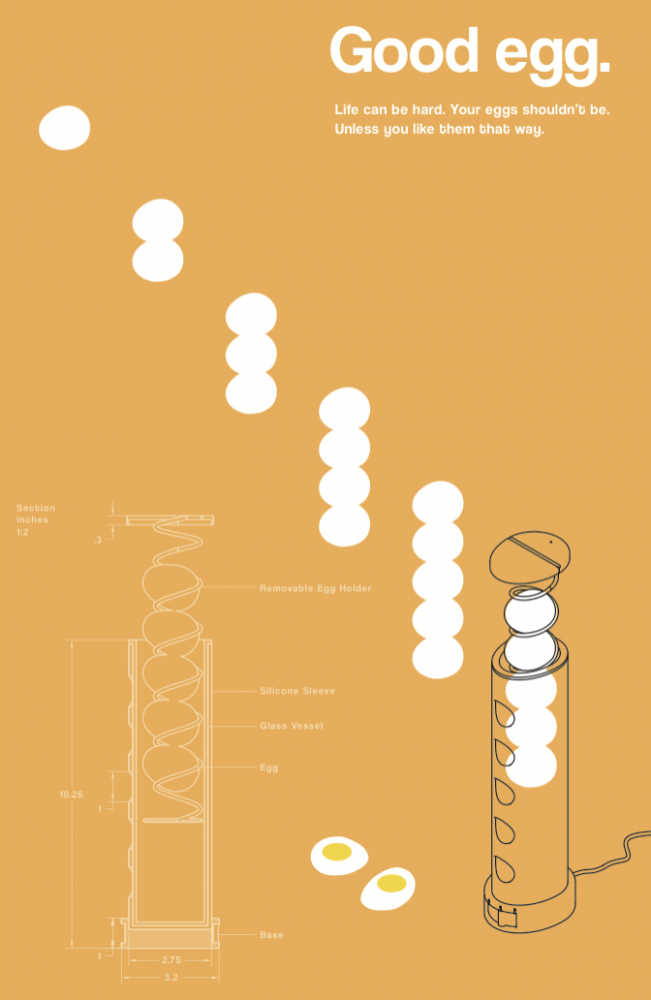
HONOURABLE MENTION
Project: CERES
Student: Zac Pepere
Faculty: Daniel Michalik + Christian Swafford
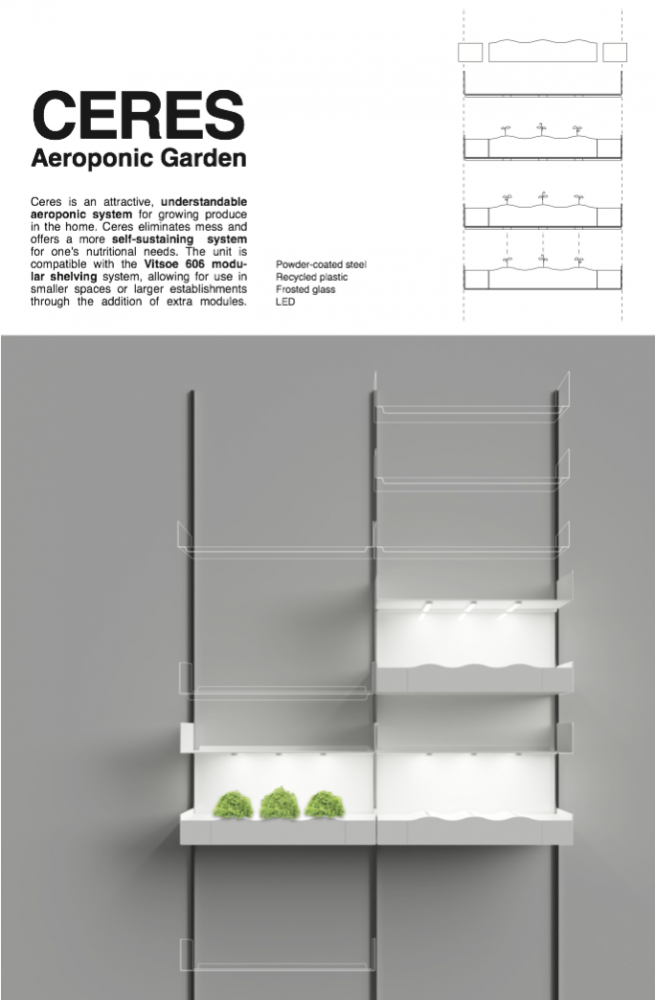
HONOURABLE MENTION
Project: CERES
Student: Zac Pepere
Faculty: Daniel Michalik + Christian Swafford
The goal of this project is to design a small clothes dryer for small families and individuals to achieve energy savings and space savings. This dryer is ideal for small clothes and natural dry clothes, such as underwear, baby clothes, and wool products. The product can be wall-mounted or placed under the clothes rack based on user needs.
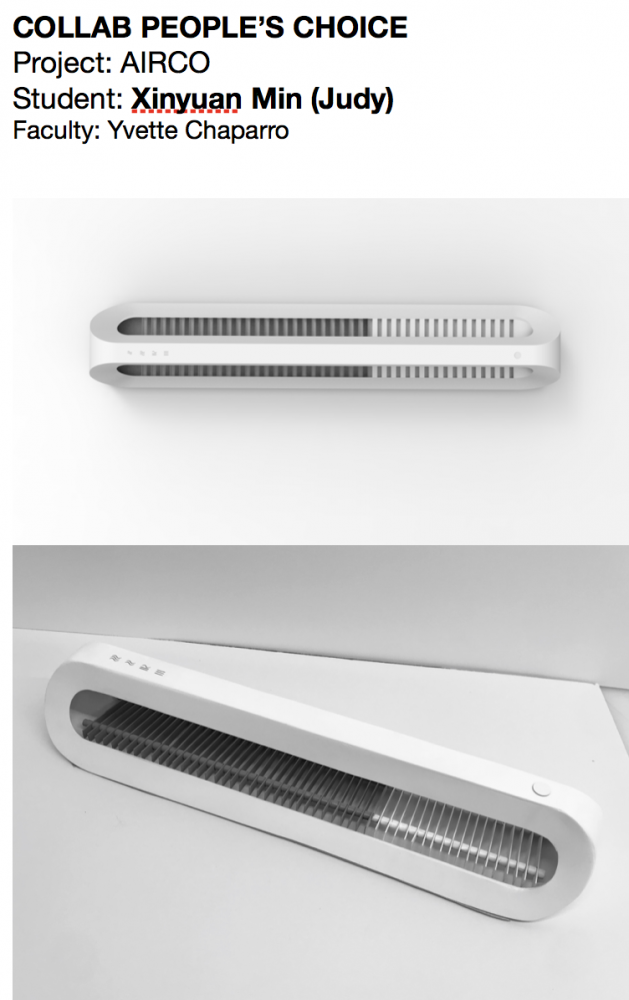
Some of the students that were asked to be part of the exhibit posing with Dieter Rams. From left to right: Dieter Rams, Saabira Markar, Xinyuan (Judy) Min, Shuyi Chen, and Vanessa Lopez.
